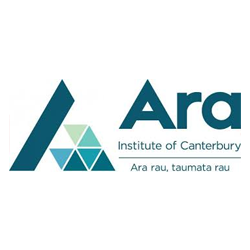
Review of the Effectiveness of Educational Tools for Teaching Telehealth Care
Status
Completed: 16 May 2010
Project Details
A project, completed in 2010, to investigate the lack of a pedagogical and professional development model for teaching Telehealth to healthcare workers. A collaboration of University of Canterbury and Christchurch Polytechnic Institute of Technology.
Aims:
The main aims of the project were to:
- create a comprehensive, review-based evidence base of most effective and efficient pedagogical tools for education health care providers on how to best deliver Telehealth
- develop a pedagogical model for education groups such as undergraduate and postgraduate medical students, nursing students, physicians and nurses who might be involved in delivering Telehealth care across New Zealand.
Methodology:
The project methodology involved:
- a review of the literature relevant to the teaching and learning of Telehealth
- a qualitative review of the content of the studies.
The research questions considered in the literature review were:
- What specific teaching programmes are reported in peer reviewed literature aimed at physicians, nurses, and other healthcare workers or professionals to teach or learn Telehealth?
- Where available, what is the relative effectiveness of one training method over another?
Team

Dr Arindam Basu
Project Leader
University of Canterbury
Dr Philippa Seaton
Christchurch Polytechnic Institute of Technology (now ARA Institute of Canterbury)
Associate Professor Ray Kirk
University of Canterbury
Elizabeth Hanley
Christchurch Polytechnic Institute of Technology
Dale Sheehan
University of Canterbury
Dr Billy O'Steen
University of Canterbury
Dr Mary Allan
University of CanterburyStatus
Funding
$8,180.00 (excl GST)
Key Findings
The key findings from the project included:
- There are significant gaps in research around the evidence based good practices in Telehealth teaching programmes worldwide that may have important implications for New Zealand.
- Experience from the review of limited studies and training description show that a programme on Telehealth teaching and training can work only when teaching and learning modalities and training sessions are contextualized with practice.
- Training for Telehealth should be tightly coupled with students’ everyday practice and must be associated with ongoing practice opportunities to retain competence.
- The review of literature shows there is little information available in terms of formal preparation of health care professionals whose main roles are to provide healthcare services over distance-based networks or asynchronously delivered services.
- Evaluations of curricula reported in the literature have been based on student satisfaction or self-reported competence surveys, rather than measuring changes in competency or knowledge, attitudes or skills between pre-implementation and post implementation of the programmes. As a result, there is little formal empirical evidence (or sufficient level or quality of evidence) to help in the formulation of a model of most effective Telehealth training practices.
Key Recommendations
The following recommendations are made as a basis for guidelines for teaching Telehealth care:
Learning in practice | Incorporate existing communities of practice of Telehealth professionals to scaffold and mentor learners as they move to independent Telehealth practice; provide workplace learning and on-the-job training to maximise the application of skills in a relevant context; provide ongoing practice opportunities so practitioners can develop and maintain competence.
Teaching practice | Focus teaching and support on optimising the practitioner’s transfer of professional skills to the new medium; incorporate apprenticeship models of learning whenever possible; emphasise hands-on learning and practical experiences; utilise multiple teaching methods to ensure learner needs are met.
Educational strategies | Develop Telehealth-based training in undergraduate training of health care professionals; design Telehealth training that reflects and utilises the modalities used by the healthcare professional in their practice.
Technology | Undertake needs assessment to assess the level of technical support the practitioner will require; provide training to increase computer literacy when necessary; deliver training that is appropriate for the technological constraints of the work context.
Systematic review relevant to other professions | An additional benefit of this project is the presentation of an applied example of a systematic review that may be relevant to other professions in the tertiary education sector. Systematic reviews are extensively used in healthcare to underpin evidence-based practice and provide guidelines for best practices. This project provides an example of using the systematic review method in the educational context that gives a model for educators, and potentially other disciplines, to use in their own fields.
Educational practice | Finally, educational practice spans many fields and disciplines. Many of the findings of this review may also be of interest, and use, to professionals beyond the health professions, particularly those in applied fields (such as teaching) or fields in which new information and communications technologies are increasingly impacting on practice.
A research report prepared by Arindam Basu, Philippa Seaton, Ray Kirk, Elizabeth Hanley, Dale Sheehan, Billy O‘Steen and Mary Allan.
(PDF, 1.3 MB, 54-pages).
- 10 May 2010